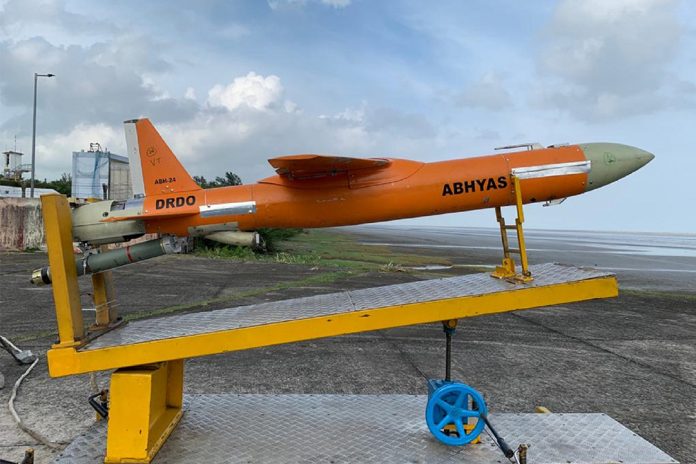
India’s Defence Research and Development Organisation (DRDO) has successfully test flown the Abhyas, or High-speed Expendable Aerial Target (HEAT), drone on 22 September, the government’s Press Information Bureau (PIB) announced on the same day.
The test, which involved two of ABHYAS demonstrator vehicles, was conducted from the Interim Test Range, Balasore in Odisha.
According to the PIB, Abhyas is indigenously designed and developed by the DRDO’s Aeronautical Development Establishment (ADE).
Abhyas adopts a missile-like form factor and features a shoulder-mounted main wing. It is capable of fully autonomous flight and used to evaluate the performance of missile systems.
The target drone is launched using a pair of underslung 68 mm rocket boosters before engaging a small gas turbine engine for propulsion. It features a micro-electromechanical system (MEMS)-based inertial navigation system (INS) for navigation, while guidance and control is managed by a flight control computer.
PIB stated that the target drone met the user’s performance requirements, including a top speed of Mach 0.5, endurance of 30 minutes, operating altitude of 5 km, and a 2G turn capability.
The Indian armed forces earlier fielded the reusable Lakshya and Lakshya-2 high‐speed aerial targets which have designed to present a realistic threat for training fighter pilots in air‐to‐air combat and simulate a variety of missile threats, although the latter is an improved model that can mimic the flight profiles of low-level cruise missiles that often skim the surface at 15 to 25 m above sea level.
The Lakshya target drone family has also been used to tow targets for ground-based air defence gunnery and missile live-fire training.
Abhyas is not designed to be recovered following a training mission, unlike Lakshya. It is believed that up to 225 of these new target drones will be acquired.
by Jr Ng










